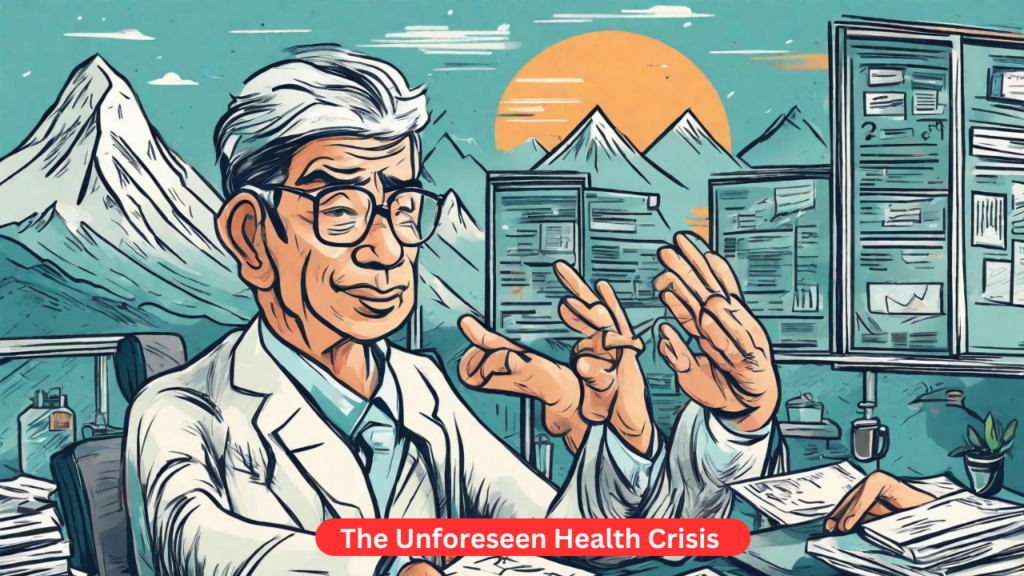Public Health- In the past decade, India has witnessed an economic transformation, marked by a remarkable increase in per capita income. This financial prosperity has undoubtedly improved the quality of life for many people across the country. However, this economic progress has also brought forth significant challenges, particularly in the realm of public health.
Let’s delve into the complexities of India’s rising health crisis:
The Wealth-Health Paradox
As incomes rise in India, so do lifestyle diseases. The delicate balance between prosperity and wellness becomes evident. According to the World Health Organisation (WHO), nearly 500 million people are projected to develop lifestyle diseases by 2030.
This alarming trend is estimated to cost the global economy a staggering USD 27 billion per annum.

The Unforeseen Health Crisis
Despite the initial euphoria of India’s economic boom, the effects of this sudden influx of prosperity are already apparent. Here are some critical factors contributing to the health crisis:
- Sedentary Lifestyles: As jobs become more desk-bound and technology-driven, physical activity has taken a backseat. The lack of regular exercise contributes to a sharp spike in health issues.
- Work-Life Imbalance: The pursuit of success often leads to long working hours, stress, and inadequate rest. Mental health concerns are on the rise.
- Processed Foods: The allure of convenience has led to overconsumption of processed and packaged foods. These often lack essential nutrients and contribute to obesity, diabetes, and heart disease.
- Tobacco and Alcohol Addiction: Rising affluence has also seen an increase in tobacco and alcohol consumption, further impacting health.

India’s Battle with Diabetes (Public Health)
India is in the throes of a diabetes epidemic. With over 70 million cases as of 2022, this chronic condition is projected to affect 134 million Indians by 2045. The cascade effects of diabetes include kidney disorders, eye issues (even blindness), nerve damage, impaired wound healing, and greater susceptibility to infections.
Shifting Demographics of Illness (Public Health)
Lifestyle diseases are no longer confined to older age groups. Younger individuals, often still in their productive years, are falling prey to conditions like heart disease. Shockingly, 50% of all heart attacks in India occur in men under the age of 50, with a quarter occurring in men under 40. This shifting paradigm demands a transformation in India’s healthcare approach—from reactive diagnosis and treatment to proactive screening and preventive strategies.
Affluenza: A Recurring Epidemic (Public Health)
As income levels rise, so does the likelihood of developing certain illnesses. This pattern is observed globally. As economies develop, specific diseases become more prevalent. The United States and China have both witnessed this phenomenon. As individuals transition from lower-middle-class to middle-class status, their consumption habits change, impacting their health.
Striking a Balance (Public Health)
India faces a critical juncture. While embracing technological advancements, we must not forget our ancient wisdom. A balanced approach that combines modern medical science with traditional practices—such as yoga, Ayurveda, and mindful eating—is essential. The middle class, often caught in the wellness trap, needs more accessible healthcare choices.
In the pursuit of wealth, let us not neglect our most valuable asset: health. It’s time for India to reclaim its legacy of well-being while navigating the complexities of the modern world.
More articles
https://news24.edupedia.site/2024/02/26/food-allergy-management/
https://news24.edupedia.site/2024/02/26/genome-study/
https://news24.edupedia.site/2023/12/18/awakening-the-serpent-a-journey-into-kundalini-yoga/
https://news24.edupedia.site/2023/06/04/ashtanga/
Discover more from News 24 Media
Subscribe to get the latest posts sent to your email.


